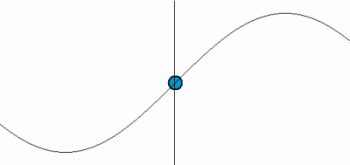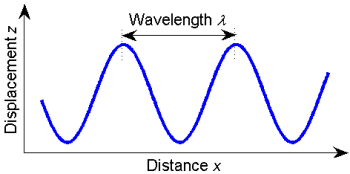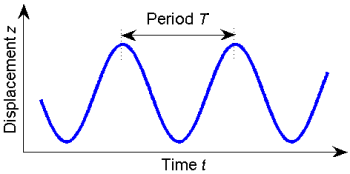1. Light and Radiation
What is light?
...and what is radiation? This sounds like a silly question. But the answer is not that easy! Physicists searched for centuries to understand its nature. Some scientists considered waves, others thought about particles which make up light and radiation. Today it is generally accepted that radiation is neither of wave nor particle nature alone. Instead, it has a dual character, which is beyond the experience in our daily life: in experiments light can exhibit either particle or wave characteristics, depending on the chosen experimental set-up and the measuring conditions. This is said to make up the complementary character of light.
To start with the most fundamental aspects: Light is mostly considered to be a wave. Waves are phenomena in space and time which are often harmonic, which means they have periodic properties in space and time. To better understand wave properties, let's first take a closer look at the movement of a ball on a water surface in the presence of a wave.

- The temporal behaviour of the wave is obvious from the moving ball at the position marked by the vertical line; the ball depicts a sinusoidal oscillation, which demonstrates the time-dependence of the wave travelling from left to right.
- The spatial behaviour of the wave can be demonstrated with a snapshot: it displays a sinusoidal curve which is fixed along the distance axis, imaging the instantaneous shape of the wave.
Both the space- and time-dependencies are characteristic features of waves!
The periodicity in space is described by the wavelength λ, which has the dimension of a length and is given in units of metres, micrometres, kilometres... It can be measured as the distance between two adjacent maxima (or: wave crests), or any other adjacent points having the same displacement and slope.
The periodicity in time is described by the period T, with the dimension of a time and given in units of seconds, hours, years. Again the period can be measured from the time lapse between two adjacent maxima.
The frequency f of a wave is another quantity which is related to the temporal behaviour of waves. It can be calculated from the period T with f=1/T. The dimension of the frequency is 1/time. If time is given in seconds (s), then the unit 1/s is called Hertz (Hz).
The velocity c of a propagating wave can be expressed with the frequency and the wavelength:
This equation will be derived and discussed in the section on electromagnetic weaves in more detail.


